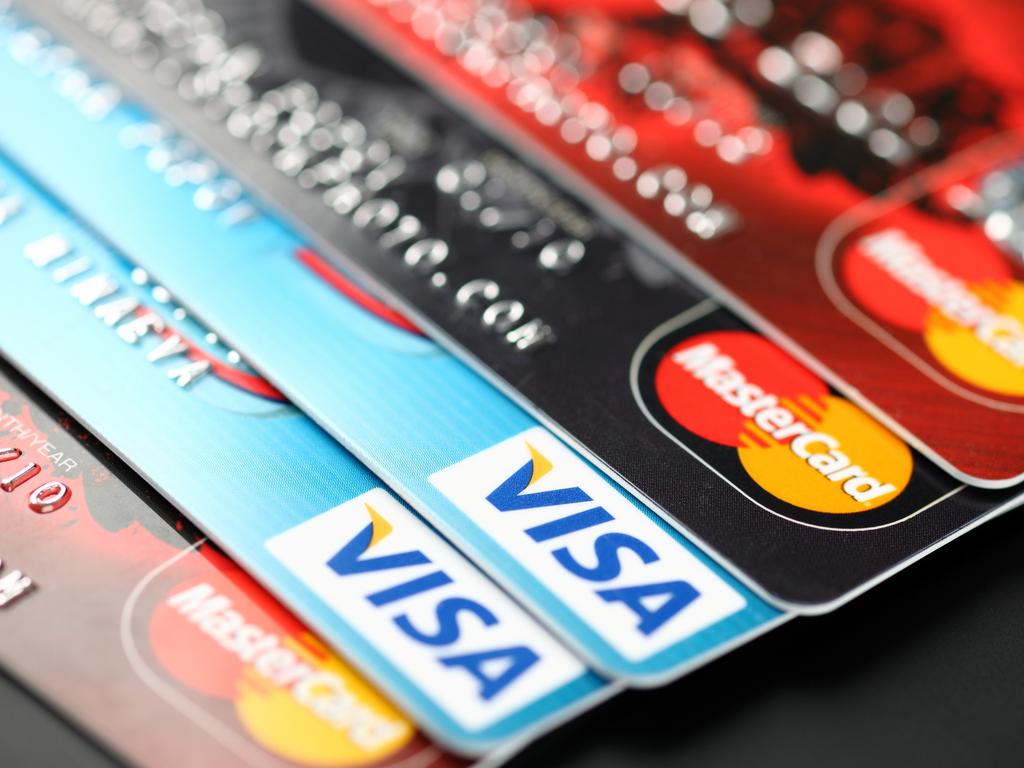Best way to pay down credit card debt to save $2931 a year
It’s a money trap that too many Aussies have fallen into but a financial adviser says there is a way to save thousands in interest.
If you’re trying to get ahead and have debt, it can be like trying to fill a leaky bucket.
Yet personal debt is so common, with data from Canstar showing the average Aussie carries $3841 in credit card debt along with $17,700 in other personal debt. Based on the average interest rate of 13.61 per cent, this means on average we’re paying a staggering $2931 every single year in dead interest costs.
But it doesn’t have to be this way.
In the current inflation, cost of living, and rental crisis every dollar counts. There are heaps of people today struggling to make ends meet, and it’s no wonder people are turning to credit – it’s a quick and easy short term fix, but ultimately it increases your costs and makes it even harder to keep up.
Getting out of debt isn’t easy, but there are a few hacks you can use to make it happen faster and easier.
Balance transfers
These days there are a heap of credit card providers that will allow you to set up a new credit card and ‘transfer’ over your existing debt. Many of these offer a 0 per cent interest rate for a certain amount of time, anywhere from three months to two years.
Using a balance transfer can immediately eliminate interest costs. With interest costs gone it means every dollar of your repayments is actually reducing how much you owe, instead of just keeping up with interest costs. Ultimately this means faster progress to being debt free.
When using a balance transfer it’s crucial you’re aware of and avoid the debt trap. When you set up a new card and transfer your balance, you are supposed to cancel your old credit card – but this doesn’t happen automatically. If you don’t cancel and keep spending on your old credit card you can end up with even more debt, a total disaster. Discipline is crucial here.
Debt consolidation loans
Another way to pay down personal debt faster is to consolidate your debt into one loan. Many of these loans offer lower interest rates, saving you on interest costs. If you have multiple debts it can be helpful to give you one single monthly repayment, so you can focus on paying down one debt faster.

With debt consolidation loans, again you need to be careful of the debt trap and ensure you’re disciplined to cancel all other debts once your consolidation loan is up and running.
Cascading debt repayments
This is my favourite strategy for ditching your bad debt for good. It can work in conjunction with balance transfers or debt consolidation loans, and also work if you don’t have a high enough credit rating to take out new debt to balance transfer or take out a debt consolidation loan.
This strategy works particularly well if you have multiple debts. Most people in this position spread repayments over each debt to gradually reduce them over time. But this can be slow going, and it’s common to feel like you’re not making any real progress.
An alternative is cascading debt repayments. With this strategy, the first step is to get clear on your minimum repayments for all debts, and to make sure payments happen every month or week without fail.

Then, you take the amount of surplus cash you have available to you – for example this might be $100 per week. Instead of spreading this amount over multiple debts, you target one specific debt. It could be your debt with the highest interest rate, but it could also be your smallest debt.
Paying down your high interest rate debt first is clearly best from an interest saving perspective. But, if you have a small debt at a lower rate, you might benefit from getting rid of this debt first to eliminate its minimum repayments and in turn increase the amount of your surplus you can apply to your other debts.
Whichever debt you choose, you focus all your spare cash towards this one debt until it’s extinguished. Once your first debt target has been eliminated, then choose your next debt target, and again direct all surplus cash to this debt until it’s gone.
Once that debt is gone, it’s another minimum repayment eliminated, and in turn this increases your monthly spare cash figure, giving you more money to tackle your next debt target.
Then rinse and repeat until you’re debt free!
The wrap
The debt cycle is easy to get into and hard to break free from, but it is crucial if you want to get ahead. Saving and investing is the key to building wealth and creating financial security and ultimately independence, but trying to do this while running debt is like trying to drive a car with the handbrake on – your progress will be slow going.
Some hard work and commitment is needed, but there are also some hacks you can leverage to make your job easier. Take the time to make this happen, and your future self will thank you for it.
Ben Nash is a finance expert commentator, financial adviser, founder of Pivot Wealth, the creator of the Smart Money Accelerator program that helps people build a second income investing faster, author of ‘Replace your salary by Investing’ and host of the Mo Money podcast. He runs regular free online money education events, you can check out all the details and book your place here
Disclaimer: The information contained in this article is general in nature and does not take into account your personal objectives, financial situation or needs. Therefore, you should consider whether the information is appropriate to your circumstances before acting on it, and where appropriate, seek professional advice from a finance professional.






